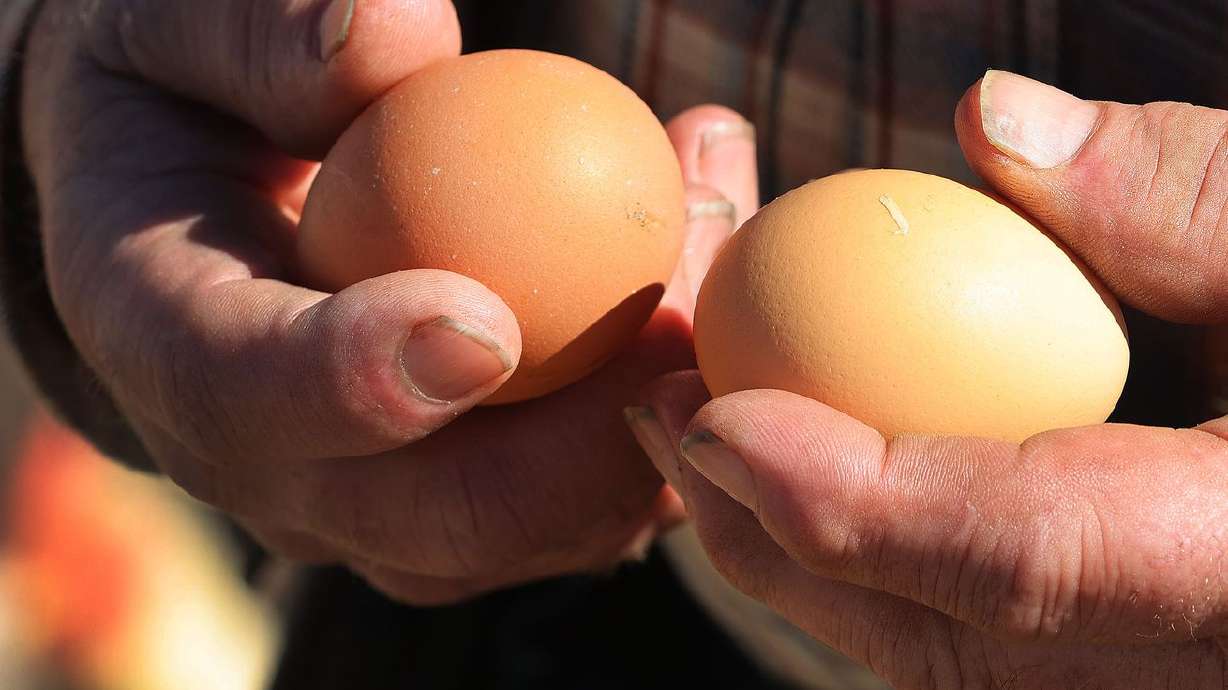Estimated read time: 4-5 minutes
This archived news story is available only for your personal, non-commercial use. Information in the story may be outdated or superseded by additional information. Reading or replaying the story in its archived form does not constitute a republication of the story.
SALT LAKE CITY — While average U.S. inflation hit a 40-year-high of 7.5% in January, Utah and the other Mountain West states saw the highest year-over-year price increases in the nation last month, hitting 9%.
The Consumer Price Index report from the U.S. Department of Labor found prices on goods and services in Arizona, Colorado, Idaho, Montana, Nevada, New Mexico, Utah and Wyoming jumped 0.9% over December 2021 and have been tracking well ahead of the national average for months.
A Deseret News/Hinckley Institute of Politics poll conducted in late January found well over 90% of Utahns are worried about inflation and most believe price increases aren't going away any time soon.
And, on Friday, the Salt Lake Chamber released new data showing consumer confidence among Utahns continued a nine-month decline in December 2021 and was over 20 percentage points lower than the same measure in March 2021. The chamber report also notes the December drop in Utah marks the first time confidence among the state's consumers declined while the U.S. average rose.
National average prices for a broad range of goods and services accelerated from December to January — and not just for items directly affected by the pandemic. Apartment rental costs rose 0.5% in January, the fastest pace in 20 years. Electricity prices surged 4.2% in January alone, the sharpest rise in 15 years, and are up 10.7% from a year earlier. Last month, household furniture and supplies rose 1.6%, the largest one-month increase on record dating to 1967.
Food costs, driven by pricier eggs, cereal and dairy products, increased 0.9% in January. Air fares rose 2.3%. New car prices, which have jumped during the pandemic because of a shortage of computer chips, were unchanged last month but are up 12.2% from a year ago. The surge in new car prices has, in turn, accelerated used car prices; they rose 1.5% in January and are up a dizzying 41% from a year ago.
In the face of record-high inflation acceleration, Federal Reserve policymakers are signaling they will speed up their tightening of credit if inflation fails to slow in the coming months.
Related:
Most officials agreed that faster interest rate hikes would be needed "if inflation does not move down" as the Fed's policymaking committee expects, according to the minutes of the central bank's late January policy meeting, which were released Wednesday.
The minutes underscore the urgency that the Fed under Chairman Jerome Powell feels about reining in a sharp spike of inflation, which has persisted longer and broadened to more industries than the policymakers had expected. As recently as December, Fed officials forecast that inflation, based on their preferred measure, would fall to an annual rate of 2.6%. It is currently 5.8%.
Most analysts expect Fed officials to raise that forecast at their next meeting, in mid March, to reflect the acceleration of consumer prices. Inflation has reached its highest pace in four decades, hammering household budgets and wiping out the benefit of rising wages.
Fed officials are expected to raise their benchmark short-term rate several times this year beginning in March. But economists have increasingly suggested that the Fed has waited too long to unleash its inflation-fighting tools.
"The Fed is behind the curve," said James Orlando, senior economist at TD Economics. "It needs to catch up, which will hopefully cool some of the inflationary froth."
At a news conference after their Jan. 26 meeting, Powell said Fed officials would have "humility" and be "nimble" in their rate decisions. He also said then that the policymakers are "of a mind to raise the federal funds rate at the March meeting, assuming that conditions are appropriate for doing so."
Even amid the challenges posed by ongoing price increases and eroding consumer confidence, Utah experts say the state's nation-leading economy is well situated to ride out current circumstances and remain vibrant.
"The economy is reaching its current limit, with unemployment hitting all-time lows at under 2% and workforce shortages capping off our ability to grow," Natalie Gochnour, director of the University of Utah's Kem C. Gardner Policy Institute, said in a Friday press release. "This healthy rebalancing within the economy — as people continue to rejoin the labor force and industry sectors recalibrate — are positive signs overall.
"Larger concerns with supply chains, persistent inflation, and pandemic-related challenges are still impacting Utah, but to a lesser extent than other states. I am optimistic that we will continue to adjust and lead the nation as we exit the pandemic."
Contributing: Associated Press










